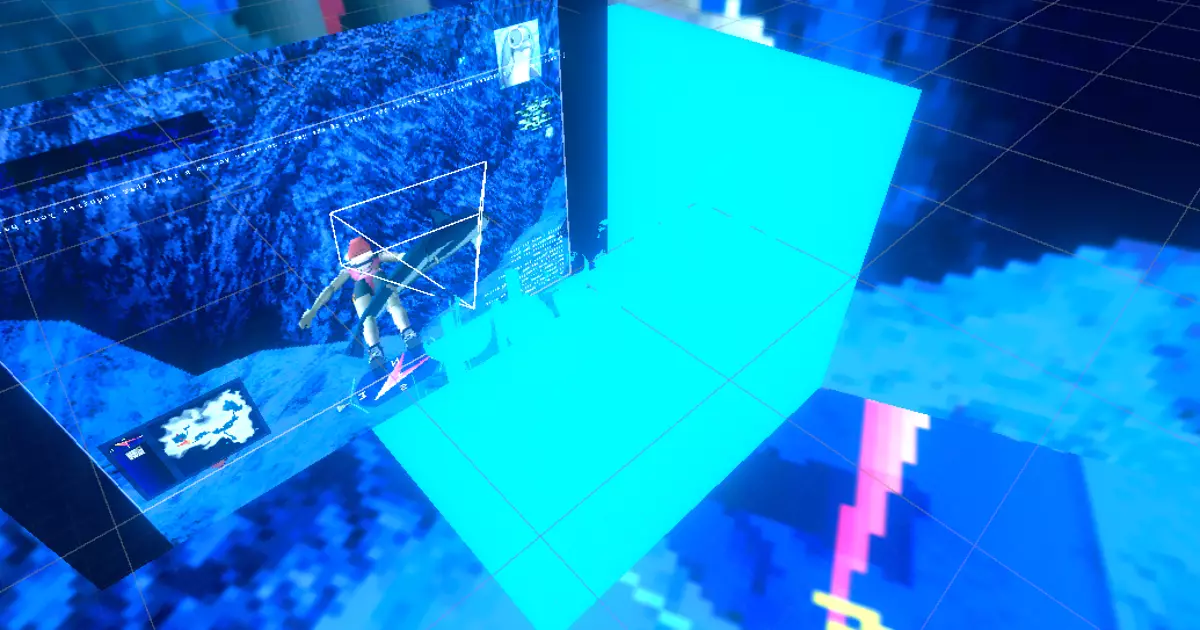The modern gaming landscape often finds itself overshadowed by the eerie nostalgia derived from the iconic horror titles of the PlayStation 1 era. Games inspired by the psychological terror of Silent Hill or the claustrophobic ambiance of Resident Evil seem to dominate the narrative, creating a skewed perception among younger players. For them, the PS1 may have become synonymous with gloom and desolation, leaving behind a legacy characterized by its bleak aesthetics. Yet, amidst this permeating darkness, creators like Hatim Benhsain emerge to remind us of the console’s versatility through innovative projects like Water Level/b.l.u.e. EXPLORATION.
Benhsain’s work serves as a refreshing antidote to the monochrome memories of the PS1 by honoring its playful side, specifically through the lens of aquatic exploration. At its core, Water Level/b.l.u.e. EXPLORATION is not merely a throwback to a forgotten era; it is a celebration of the medium’s capacity for creativity and expression. Inspired by b.l.u.e.: Legend of Water, a title that is often relegated to the obscure corners of gaming history, Benhsain’s experiment breathes new life into the underwater adventure genre.
The term “plunderludic” is a fascinating invention of Benhsain, suggesting a game crafted from the remnants of other games. It transcends traditional concepts of remastering or emulation, blurring the lines between homage and innovation. In this interactive experience, players navigate a shifting landscape infused with snippets from classics like Dark Souls, Super Mario 64, and Kingdom Hearts, all the while losing themselves in a pixelated ocean of rich colors and surreal visuals.
Unlike simple collages that merely string together disparate elements, plunderludic design allows players to engage deeply with the fragments of various games’ ecosystems. This transformative experience feels almost like a dreamscape, deeply evocative of surrealist art. It poses intriguing questions about originality in gaming, as Benhsain’s multifaceted approach showcases the potential of collaboration across time and genres, creating an output that is both familiar and undeniably fresh.
The act of swimming in Water Level/b.l.u.e. EXPLORATION reinstates a sense of whimsy and wonder that many modern aquatic titles have neglected. It revisits fundamental mechanics from its predecessor, Legend of Water, but alters their functionality completely to match the game’s swirling narrative and shifting gameplay experience. Each level represents an act of joyful exploration, inviting players to lose themselves in a world that celebrates aquatic navigation as an artistic practice.
Against a backdrop of jagged ruins and shimmering waters, players are treated to a feast of sound as stray notes from American Idol performances blend with echoes of Madonna. This soundscape isn’t simply there to set the mood; it transforms the passage through the game into an auditory adventure that complements the visual exploration. Both aspects work harmoniously, reminding us that video games are not just interactive entertainment; they are a sensory experience that can be whimsical, sorrowful, or haunting, depending on how they are shaped.
What truly resonates with players of Water Level/b.l.u.e. EXPLORATION is the artistic methodology of immersing oneself in water. In the myriad of contemporary gaming, where graphic capabilities have pivoted toward hyper-realism and meticulous detail, it can be argued that the sense of magic associated with underwater environments has been diluted. Titles like Subnautica may offer astonishing visuals, but the enchanting allure of exploration submerged beneath the waves has almost become mundane.
Benhsain’s creation is a heartfelt call to reconnect with that lost magic. It redefines our interaction with water, infusing it with a spirit of play that catalyzes nostalgia and curiosity in equal measure. It serves as an important reminder: Video games should not only strive for realism but should embrace whimsy and wonder, allowing players to once again feel exhilarated by the prospect of diving into the fantastic. As we navigate this intersection of game design and artistic expression, perhaps it is time to revisit our favorite underwater levels, reflecting on how they shaped our gaming journey and inspired us to dream.


Leave a Reply